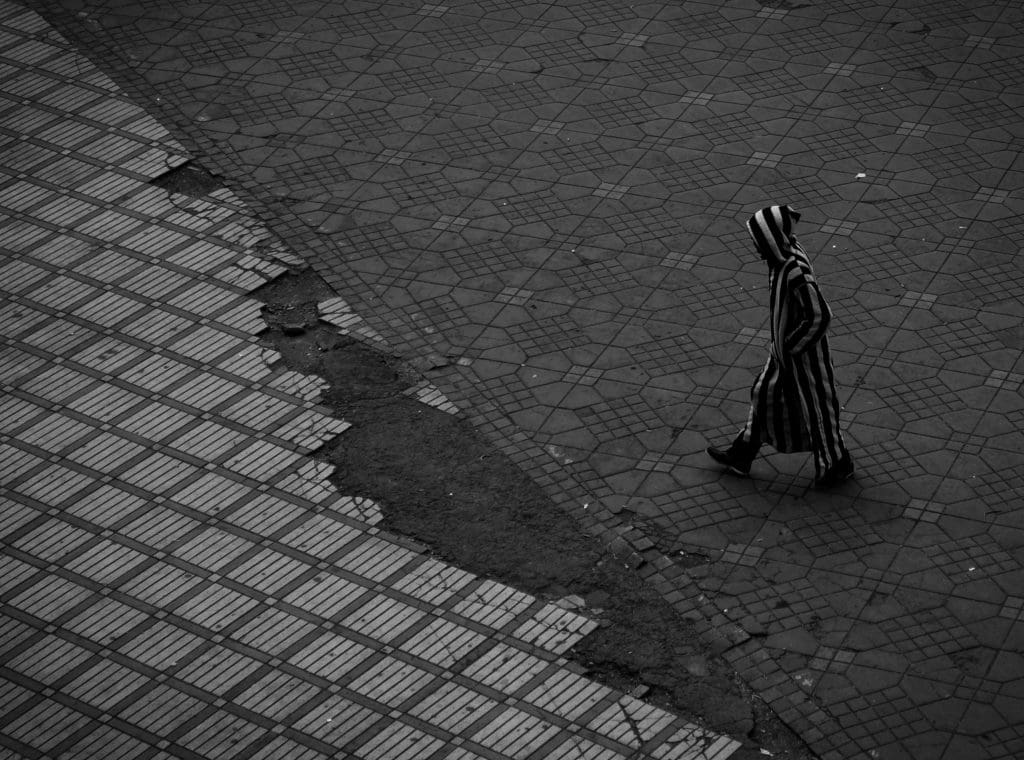Street photography gave us some of the best photographers in the world and has plenty of fans. You’ll find as many tips. Articles cover gear, composition, subject choosing, and location hunting. Some articles address street photography ethics and legislation and teach you how to approach it from a legal point of view. Although logistics and photography skills are very important, there is also a more subtle and philosophical approach to street photography. Let’s discuss street photography philosophy a bit more in-depth.
Flow versus Presence
If you watch a street photographer at work, you’ll notice that they are in a sort of flow. They move smoothly from one shot to another, watch the world intensively, and manipulate their gear like a magician. They don’t stop to look at the camera and rarely check if the shot they’ve just taken is any good. Usually, they take hundreds of photos in a day and spend much time going through them and culling the best ones.
This workflow is efficient and inspiring. It often creates the best street photos. But it may also be detrimental to connection. While immersed in the flow, the photographer isn’t present in the real world but rather captive in an artistic one. They don’t see people as people but as subjects. They don’t see situations as personal dramas but as compositions. As a result, the people on the street may perceive the photographer as an intruder and become hostile. Their negative energy may reflect on the camera, producing cold and impersonal photographs.
Photo by Bernardo Ramonfaur on Unsplash
Photographer versus Subject
People you photograph have their agendas just as much as you have yours. Regardless of the legislation, there are situations when you shouldn’t take photos. Put yourself in your subject’s shoes and imagine how you would feel if someone would photograph you during an intimate or struggling moment. If in doubt, ask for permission. You may lose a great shot, but you’ll be a better person.
Street photographers argue that their work documents human behaviors, emotions, social issues, and culture. And it’s true. Street photography has a historical value. It’s also a form of art in a public space where everyone can see what is happening. But take a moment to consider if the historical and cultural value is more important than the feelings of the person in front of you. Sometimes, you may step back and photograph the scene from a distance. Other times, you may put down the camera. Be a human being as much as a photographer.
Photo by Sasha Samusevych on Unsplash
Achievement versus Love
When planning a street photo session, ask yourself this question: Am I fighting for power or love? It’s a question that emerged from Imago couples therapy that works like a charm for street photography. Power means an amazing shot that deserves a place in a magazine or exhibition and has the potential to make you famous. Love means experimenting with a touching moment, meeting someone you were meant to meet, or learning something about yourself. Love is about being kind and caring about people, while power is about being recognized and caring about yourself. Both are good, but in different doses.
Photo by Ruben Hutabarat on Unsplash
Conclusion
Street photography is not just about you and not just about the others. It is a complex mix of documentary work and self-help, social work and meditation, and everything else. So ask yourself the right questions and decide whether you want the flow or the presence, make it about yourself or others, or be ambitious or altruistic.
Cover photo by Noah Rosenfield on Unsplash

